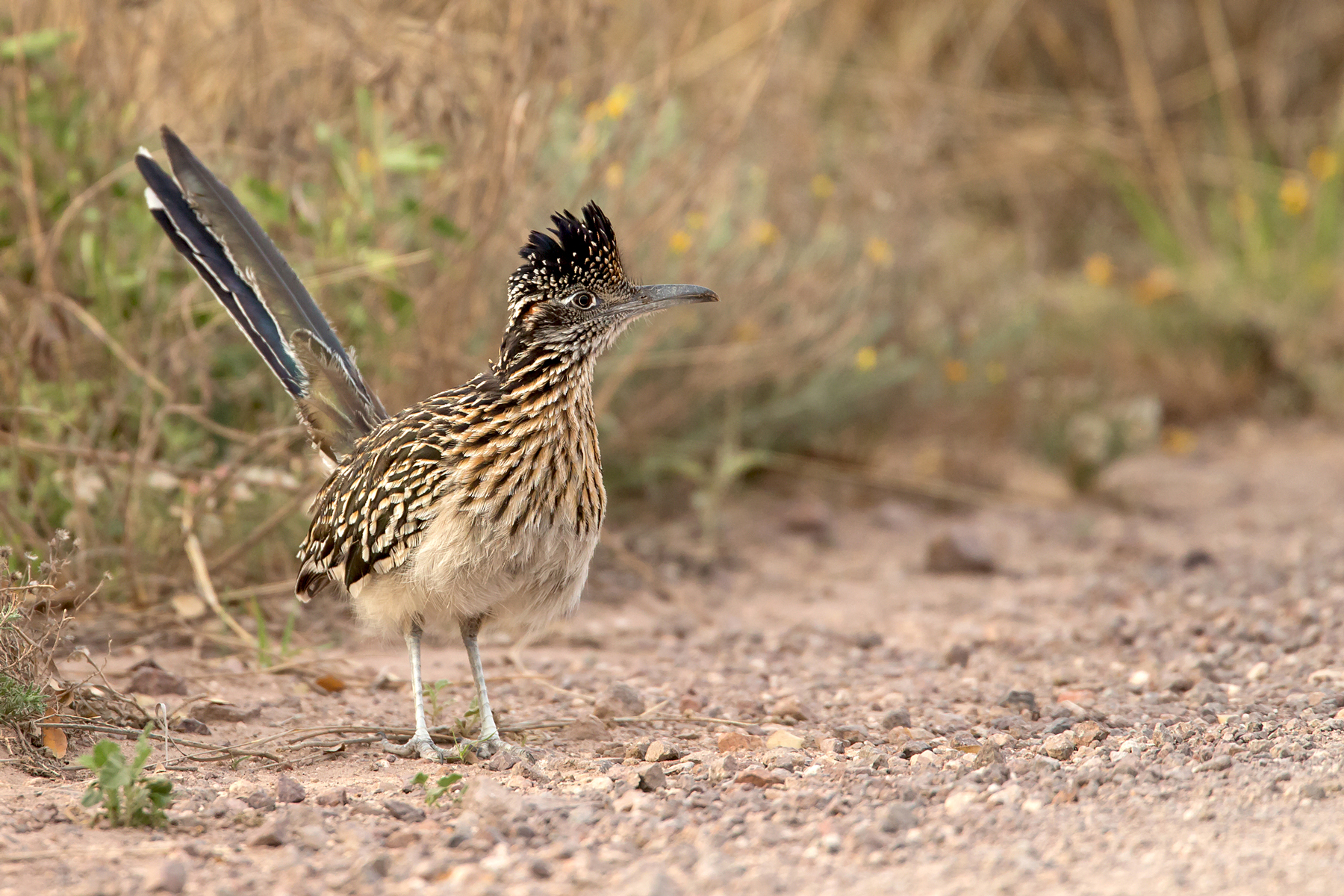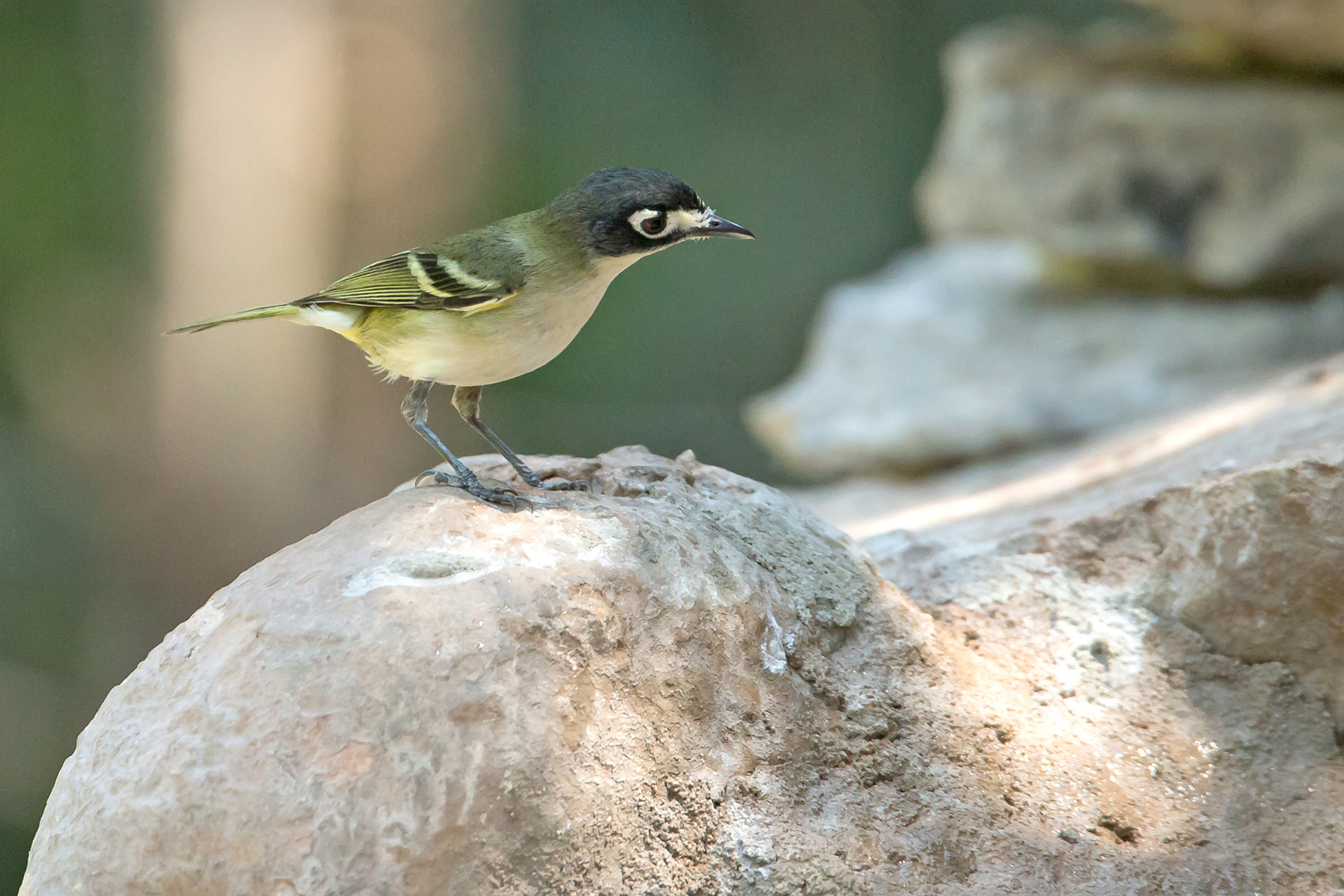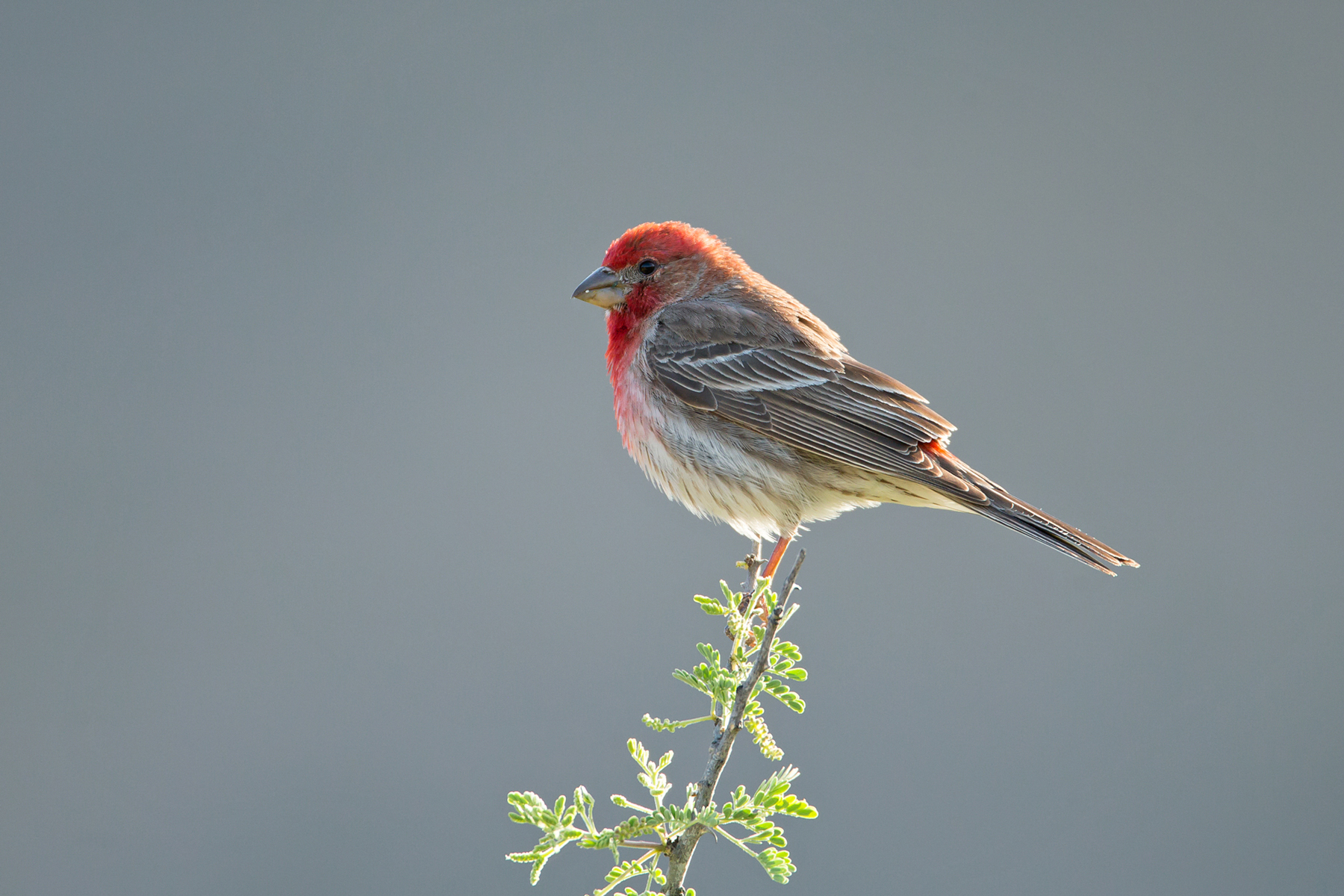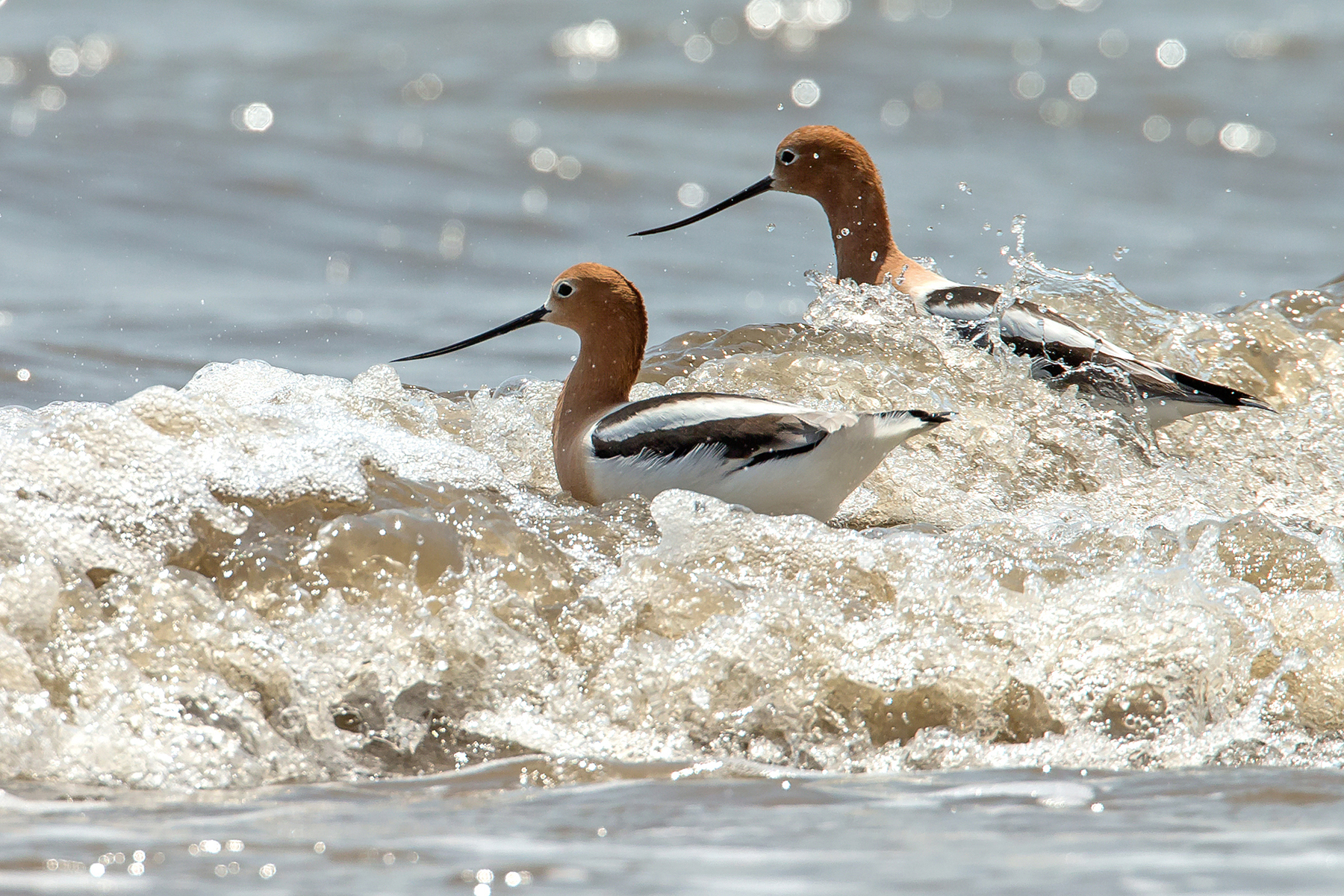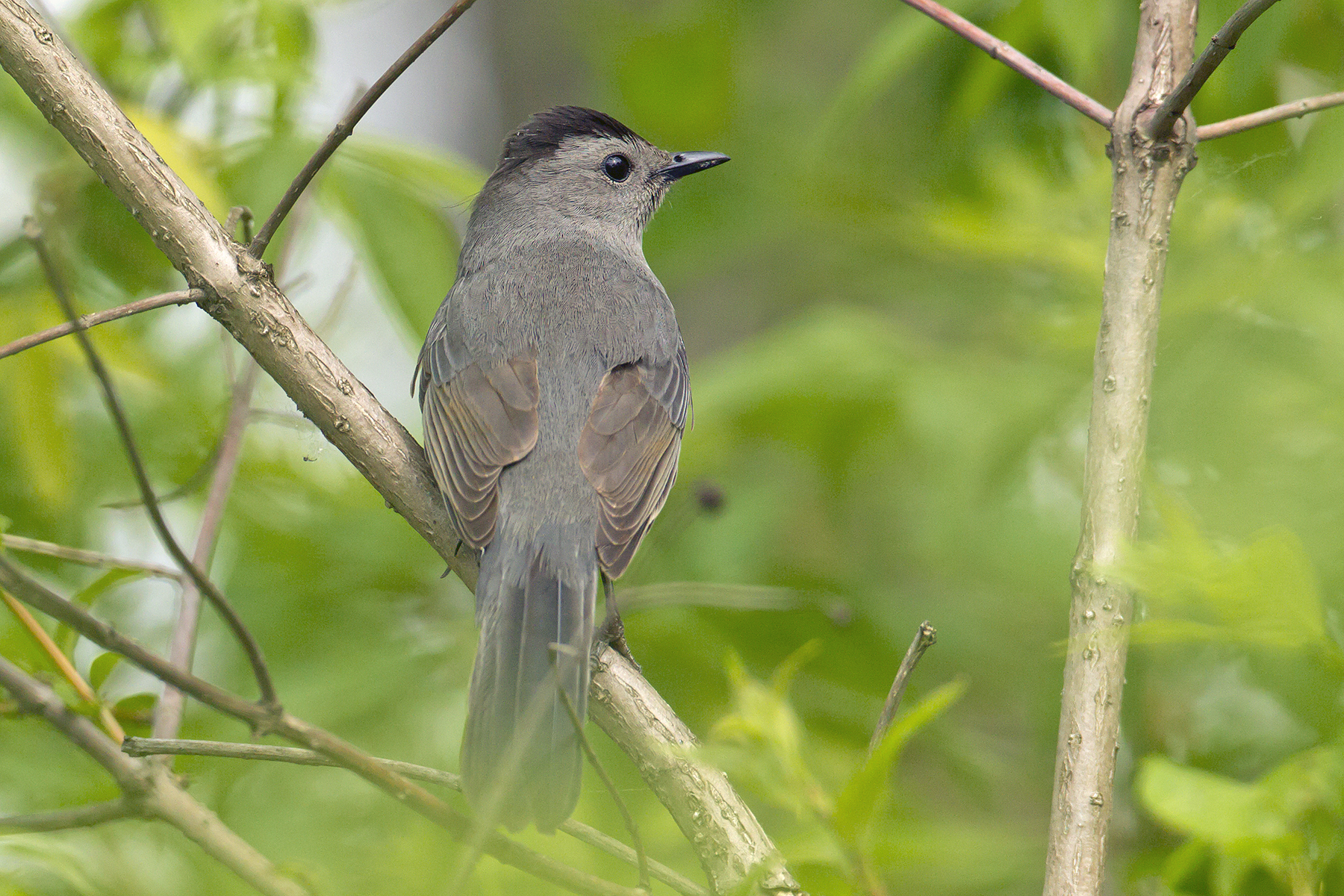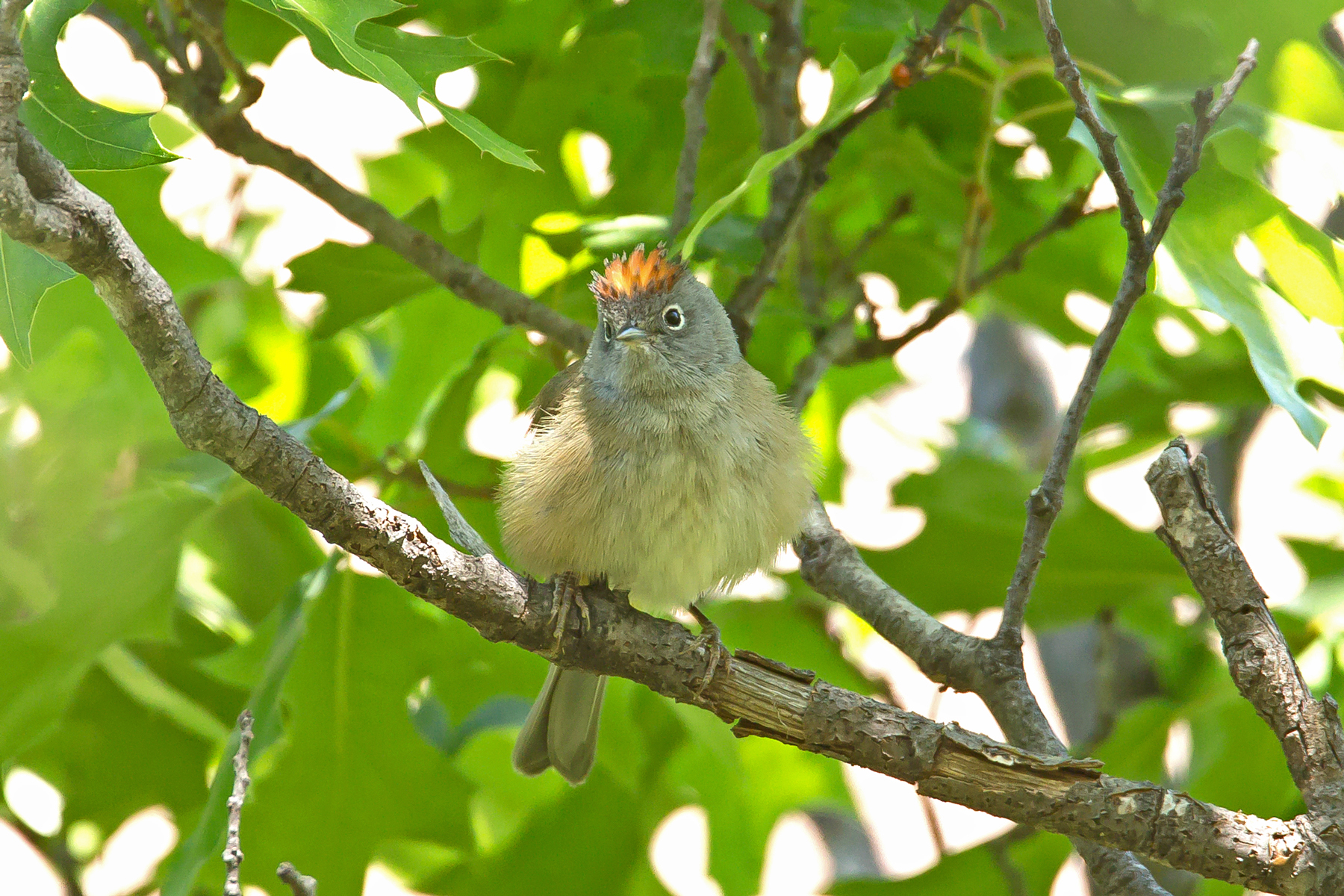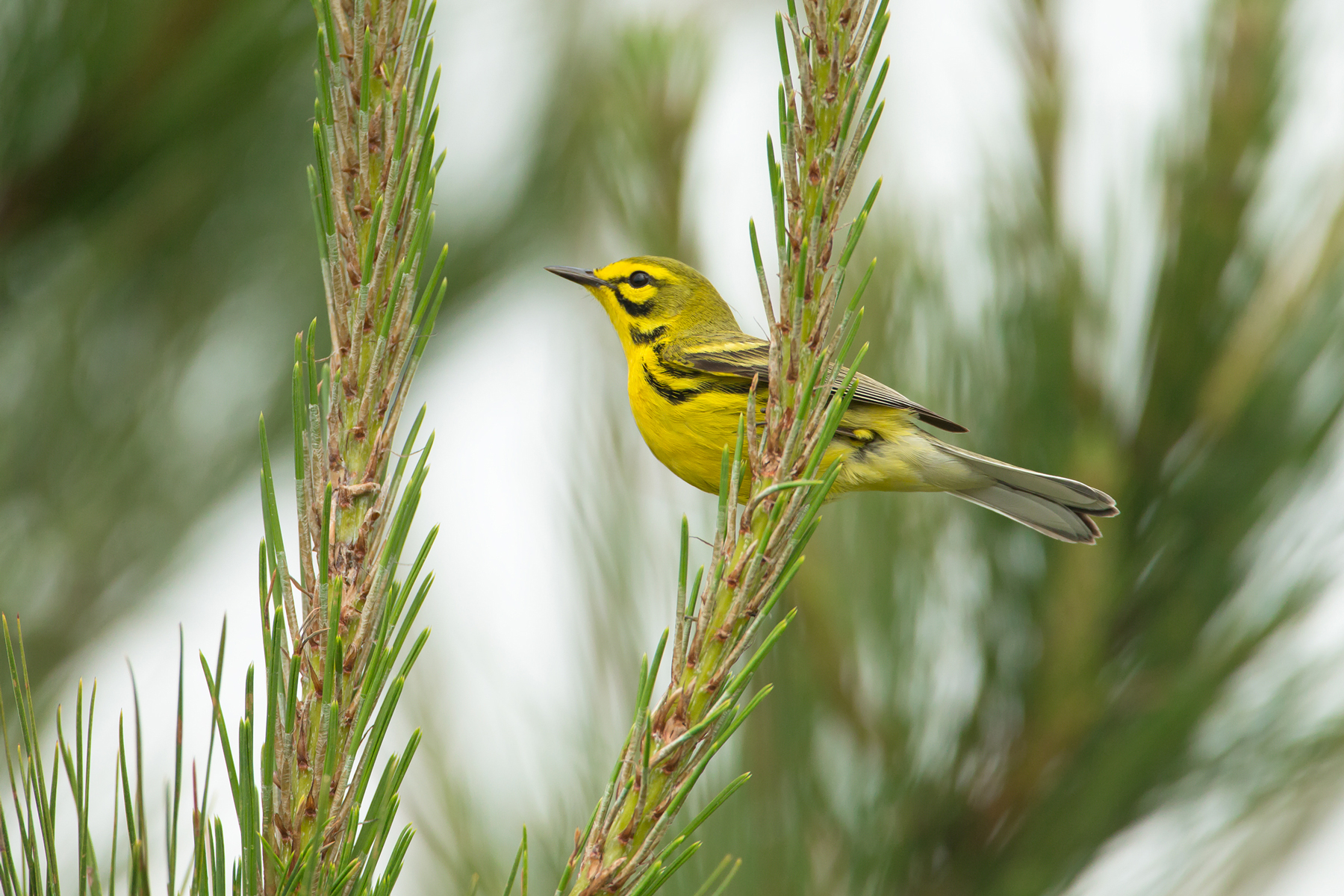TEXAS BIRDING TOUR: DETAILED ITINERARY
Texas: Day 1 Our tour begins this evening at our San Antonio hotel.
Texas: Day 2 This morning we head southeastward to Fulton for an overnight stay. We will spend the afternoon exploring the Fulton area.
Texas: Day 3 This morning we will make an excursion to see the magnificent Whooping Crane at Aransas National Wildlife Refuge. We should enjoy good views of these impressive birds which have significantly increased in numbers in recent decades. We may even see some interaction between the pairs, each of which jealously guards its winter-quarters feeding territory (only sharing it with their young of the previous year), enjoying the bugling calls and dancing display of these spectacular birds. By April the cranes have started to leave for their subarctic breeding grounds in Canada, but a number will still be present.
We should also encounter a fine selection of other waterbirds at Aransas or in the Fulton area, including Common Loon (or Great Northern Diver), American White and Brown Pelicans, Double-crested Cormorant, Great, Snowy and Reddish Egrets, Great Blue, Little Blue and Tricolored Herons, Black-crowned Night Heron, White Ibis, Roseate Spoonbill, Lesser Scaup, Red-breasted Merganser, American Oystercatcher, American Avocet, Willet, Long-billed Curlew, Marbled Godwit, Ruddy Turnstone, Laughing and Franklin’s Gulls, American Herring Gull, Caspian, Royal and Forster’s Terns, and the bizarre Black Skimmer.
Afterwards, we will head south to Harlingen in the lower Rio Grande Valley, the southernmost part of Texas, where we will stay for three nights.
En route, we will cross the vast King Ranch and we will stop from time to time to check out the many birds of prey that are a feature of the area. The commonest species are Black and Turkey Vultures, Red-tailed Hawk, Crested Caracara and American Kestrel, so we shall be concentrating on the less numerous White-tailed Kite and Harris’s and White-tailed Hawks. We can also expect Western Cattle Egret, Lark Sparrow and Eastern Meadowlark.
Texas: Days 4-5 Here in the deep south of Texas we are almost literally a stone’s throw from Mexico and its influence is very obvious, both in the faces of the passers-by and in the composition of the local birdlife. During our stay in the Rio Grande Valley, we shall visit a series of famous birding localities, including Sabal Palm Grove, Santa Ana refuge (which protects a relict tract of the subtropical woodland which once covered the Rio Grande Valley), Bentsen-Rio Grande State Park and Falcon Reservoir. These sites are famous for their many southern specialities and there is always the chance of a wandering rarity from south of the border.
Amongst the more interesting resident specialities that we should encounter are four species restricted to Texas and northeast Mexico; Green Parakeet, Red-crowned Amazon, Black-crested Titmouse and Long-billed Thrasher. Both the parrot species have recolonized the lower Rio Grande Valley, apparently naturally, after becoming locally extirpated. (Tamaulipas Crow, a northeast Mexican endemic, used to wander over to Brownsville quite regularly, but nowadays has become rare and unpredictable.)
More widespread species that extend into Texas include Least Grebe, Neotropic Cormorant, Black-bellied Whistling Duck, Grey Hawk, the noisy Plain Chachalaca (so habituated at some places that they run up for handouts!), Red-billed Pigeon, White-tipped Dove, Pauraque, Buff-bellied Hummingbird, Ringed and Green Kingfishers, Golden-fronted Woodpecker, Northern Beardless Tyrannulet, Couch’s and Tropical Kingbirds, Great Kiskadee, Brown-crested Flycatcher, the striking Green Jay, Clay-colored Thrush, Olive Sparrow, Altamira and Audubon’s Orioles, and Bronzed Cowbird. (Brown Jay also became resident in extreme south Texas for a time, but is now only an extremely rare visitor.)
Amongst the many other species that we may well see are Anhinga, Green Heron, Sharp-shinned and Red-shouldered Hawks, Mourning, Inca and White-winged Doves, Common Ground-Dove, Great Horned Owl, Ladder-backed Woodpecker, Yellow-bellied Sapsucker, Northern Flicker, the brilliant Vermilion Flycatcher, Chihuahuan Raven, Carolina and House Wrens, Blue-grey Gnatcatcher, Northern Mockingbird, White-eyed Vireo, Northern Cardinal, Brewer’s Blackbird, Great-tailed Grackle and American Goldfinch. In addition, passerine migrants are often much in evidence at this time of year and sometimes one or two wintering Sprague’s Pipits linger into spring.
We should also see a selection of mammals during our visit to the region, including Coyote, Common Racoon, Collared Peccary, Pronghorn Antelope, Eastern Fox Squirrel, Spotted and Mexican Ground Squirrels and Eastern Cottontail.
Texas: Day 5 Today, we will head northeastwards past the port city of Galveston until we reach High Island, where we will stay for four nights.
Texas: Days 7-9 Much of our time will be spent in the woodlands around the village of High Island, particularly in the early mornings. These areas can be simply full of migrant land birds in spring, especially during ‘fall’ conditions. An extraordinary variety of American wood-warblers can be found here at this season, all in pristine breeding plumage! The more common warbler species should include Tennessee, Yellow, Magnolia, Black-throated Green, Blackburnian, Bay-breasted, Black-and-white, Kentucky and Hooded Warblers, Northern Parula, American Redstart, Ovenbird, Northern Waterthrush and Common Yellowthroat. In addition, Orange-crowned, Blue-winged, Golden-winged, Nashville, Chestnut-sided, Blackpoll, Cerulean, Prothonotary, Worm-eating, Swainson’s and Wilson’s Warblers and Louisiana Waterthrush can also turn up during this time of year.
Other migrants could well include Yellow-billed Cuckoo, Common Nighthawk, Chimney Swift, bewildering Empidonax species such as Least, Yellow-bellied, and Willow Flycatchers, Eastern Kingbird, Scissor-tailed Flycatcher, Ruby-crowned Kinglet, Wood, Swainson’s and Grey-cheeked Thrushes, Veery, American Robin, Grey Catbird, several species of vireos (including Red-eyed, Warbling, Philadelphia and Blue-headed), Scarlet and Summer Tanagers, Rose-breasted and Blue Grosbeaks, Indigo Bunting, and Orchard and Baltimore Orioles. With so many migrants being in their glorious summer plumage, a good day for migration can be a riot of colour!
We will also visit the nearby coastal marshes at Anahuac National Wildlife Refuge which harbour Pied-billed Grebe, American and Least Bitterns, Yellow-crowned Night-Heron, White-faced Ibis, Fulvous Whistling-Duck, Mottled and Ruddy Ducks, Green-winged and Blue-winged Teals, American Wigeon, Northern Shoveler, Gadwall, Redhead, Purple Gallinule, Common Moorhen, American Coot, Black Tern, Belted Kingfisher, migrant Barn, Tree, Bank, Northern Rough-winged and Cliff Swallows, Swamp and Seaside Sparrows, Dickcissel, Red-winged Blackbird and Brown-headed Cowbird. There are also chances of seeing Clapper and King Rails and Sora.
Raptors are numerous in the Anahuac area and could include Swainson’s and Broad-winged Hawks, Northern Harrier, Osprey and Peregrine Falcon. Flooded fields attract migrant shorebirds such as American Golden Plover, Hudsonian Godwit, Greater and Lesser Yellowlegs, Spotted, Buff-breasted, Upland, Pectoral, Solitary and Stilt Sandpipers, Wilson’s Phalarope, Long-billed Dowitcher and summering Black-necked Stilts. An evening visit here could produce Barn Owl and we may even hear the secretive Black Rail, although seeing one would be extraordinarily lucky.
Just south of High Island lie the famous Bolivar Flats, which are a Mecca for shorebirds, gulls, terns, and pelicans. Here, large numbers of shorebirds occur in spring, routinely including Grey (or Black-bellied), Snowy, Wilson’s, Piping and Semipalmated Plovers, Hudsonian Whimbrel, Short-billed Dowitcher, Red Knot, Sanderling, Dunlin, and Semipalmated, Western and Least Sandpipers. More uncommon migrants include White-rumped and Baird’s Sandpipers.
Other species to be found here include Black-necked (or Eared) Grebe, Common, Least and Sandwich Terns (and a chance of Gull-billed Tern), Horned Lark and Nelson’s Sharp-tailed Sparrow, and this is one of the few areas along the Gulf Coast where Boat-tailed and Great-tailed Grackles occur side by side.
We will also set out early one day and make a trip to the Jasper area, situated near the eastern border of Texas. The Longleaf Pine forests of the Jasper area offer a rich diversity of woodland birding opportunities. Our main quest here will be for several species that are largely confined to this habitat. Family parties of the threatened Red-cockaded Woodpecker use trees infected with red heart disease as nesting sites and several groups occur in the Jasper area. The threatened Bachman’s Sparrow is also a specialized breeder here, preferring bluestem grasslands within the forest, and we should be able to locate one by listening for its beautiful song.
The ‘piney woods’ also hold Red-headed Woodpecker, the huge Pileated Woodpecker, Brown-headed Nuthatch, and both Pine and Prairie Warblers, while additional species include Northern Bobwhite, Chuck-will’s Widow, Red-bellied and Downy Woodpeckers, Northern Flicker, Loggerhead Shrike, Blue Jay, American Crow, Purple Martin, Tufted Titmouse, Eastern Bluebird, Brown Thrasher and Common Grackle. Here, as in the Rio Grande Valley, there will also be a chance of seeing migrant Mississippi Kites and other raptors overhead.
On our way back to High Island, we will make a detour to look for Fish Crow (a species restricted to the eastern and southern coasts of the United States, which just enters Texas).
Texas: Day 10 This morning we will either have a last look around at High Island or, if we missed Red-cockaded Woodpecker earlier, visit another forest in the Houston area that is a favoured area for this uncommon bird.
Afterwards, we will drive westwards to the Edwards Plateau for a three nights stay (most likely split between two venues).
Texas: Days 11-12 The Texas Hill Country, or Edwards Plateau, is known as an area where many eastern bird species reach their western limits and many western species reach their eastern limits. The scenic beauty of this elevated limestone plateau is a surprise to many people who think of Texas as a singularly flat state comprised of desert and ranch land. The roadside display of flowers in the spring can be incredibly spectacular and the birding is excellent.
During our stay in the region, we will explore several locations on the Edwards Plateau including one of the best places to find Black-capped Vireo. The vireos skulk in dense thickets of scrub oak and can be hard to see well, although perseverance generally pays off. There are also small numbers of nesting Grey Vireos here, and although sometimes difficult we should see this often localized species. Rufous-crowned Sparrows are common and we should also be able to find some gorgeous Scott’s Orioles in the open oak woodland. Cave Swallows also nest in the area.
There may still be good numbers of migrant sparrows around, including flocks of Chipping and Clay-colored Sparrows, plus smaller numbers of Grasshopper, Vesper, Field, Savannah, White-crowned and Lincoln’s.
Other species we may well encounter in this region include Wood Duck, Zone-tailed and Cooper’s Hawks, Wild Turkey, Western Kingbird, Eastern Phoebe, Great Crested Flycatcher, Verdin, Canyon Wren (with its remarkably beautiful song), Bewick’s Wren, Black-tailed Gnatcatcher, Cedar Waxwing, Bell’s Vireo, Yellow-throated Warbler, Yellow-breasted Chat, the spectacular Painted Bunting, Black-throated Sparrow, Lesser Goldfinch, Pine Siskin and Hooded Oriole. One evening we will try for Eastern Screech Owl.
We will also visit Lost Maples State Park, another scenic locality that is full of birds. The prime attraction here is the rare and stunning Golden-cheeked Warbler that breeds only in central Texas. At least one pair of Green Kingfishers makes its home along the river, where Louisiana Waterthrushes also nest. Great Horned Owls, Common Ravens and a pair of the fuertesi race of the Red-tailed Hawk nest on the riverside cliffs and Woodhouse’s Scrub-Jays may well mob us at the picnic site. Sugar feeders at the park office attract large numbers of Black-chinned Hummingbirds and the occasional Ruby-throated, emphasizing the ‘east meets west’ theme. Bushtits and Blue Grosbeaks nest on the scrub-covered hillsides, while the woodlands hold Ladder-backed Woodpecker, Eastern Wood Pewee, Eastern Phoebe, Acadian Flycatcher, Carolina Chickadee and Yellow-throated Vireo.
Texas: Day 14 Today we will travel westwards to West Texas for a total stay of four nights (spending two of these nights at Alpine and two at the Davis Mountains). Along the way, amidst increasingly arid landscapes, we will make a few stops for species like Harris’s Hawk, Crested Caracara, Northern Bobwhite, Lesser Nighthawk, Chihuahuan Raven, Rock Wren and Cassin’s Sparrow.
Texas: Days 15-16 The wild and rugged mountain ranges of far western Texas, which include the Davis Mountains, will serve as a backdrop for some splendid birding.
Higher elevation species to be looked for include Golden Eagle, Band-tailed Pigeon, White-throated Swift, Blue-throated Hummingbird, Acorn Woodpecker, Cordilleran Flycatcher, Hutton’s Vireo, Mexican Jay, Violet-green Swallow, White-breasted Nuthatch, Phainopepla, Western Bluebird, Hepatic Tanager, Black-headed Grosbeak, Spotted Towhee and possibly also Painted Whitestart and Magnificent and Broad-tailed Hummingbirds. The restricted-range Colima Warbler nests mainly above an elevation of 1800m (5906ft) and our quest for this special bird will take us some time, but some incredibly scenic views will make this supremely worthwhile. Another major speciality here is the beautiful Montezuma Quail, which as always can be hard to find, but we have a reasonable chance.
In the lower-lying desert and riparian areas we may well find Scaled Quail, the strange Greater Roadrunner, Say’s and Black Phoebes, Ash-throated Flycatcher, Cassin’s Kingbird, the impressive Cactus Wren, Curve-billed Thrasher, Black-chinned Sparrow, Varied Bunting, Pyrrhuloxia, House Finch, the brightly-hued sennetti race of the Hooded Oriole and perhaps also Common Black Hawk and Crissal Thrasher. The big attraction here is the restricted-range Lucifer Sheartail, and this is one of the best areas to find it anywhere in the United States. Night birding should produce Western Screech Owl and the delightful Elf Owl, and perhaps Common Poorwill.
There may well be some winter visitors or spring migrants present, some of which are close to their eastern limits. These include Townsend’s Solitaire, Townsend’s, Black-throated Grey and MacGillivray’s Warblers, Green-tailed Towhee and Lark Bunting.
Texas: Day 17 Today we will head for San Antonio airport, where our tour ends early this afternoon.


